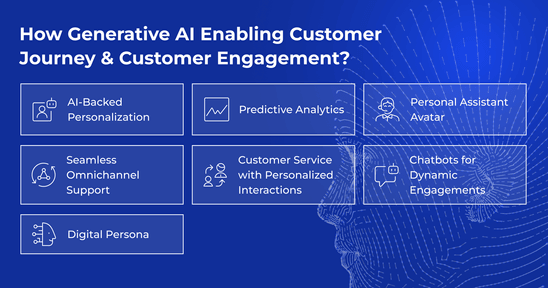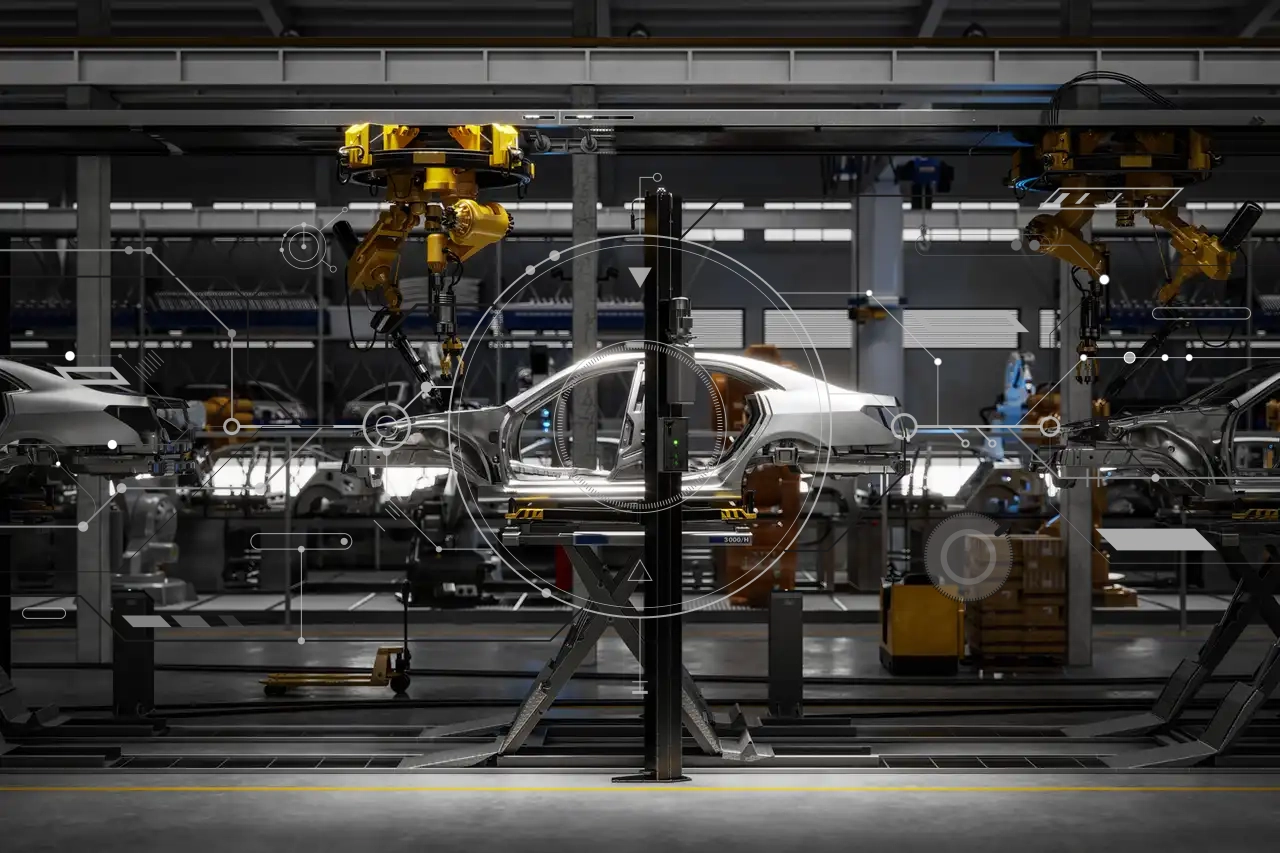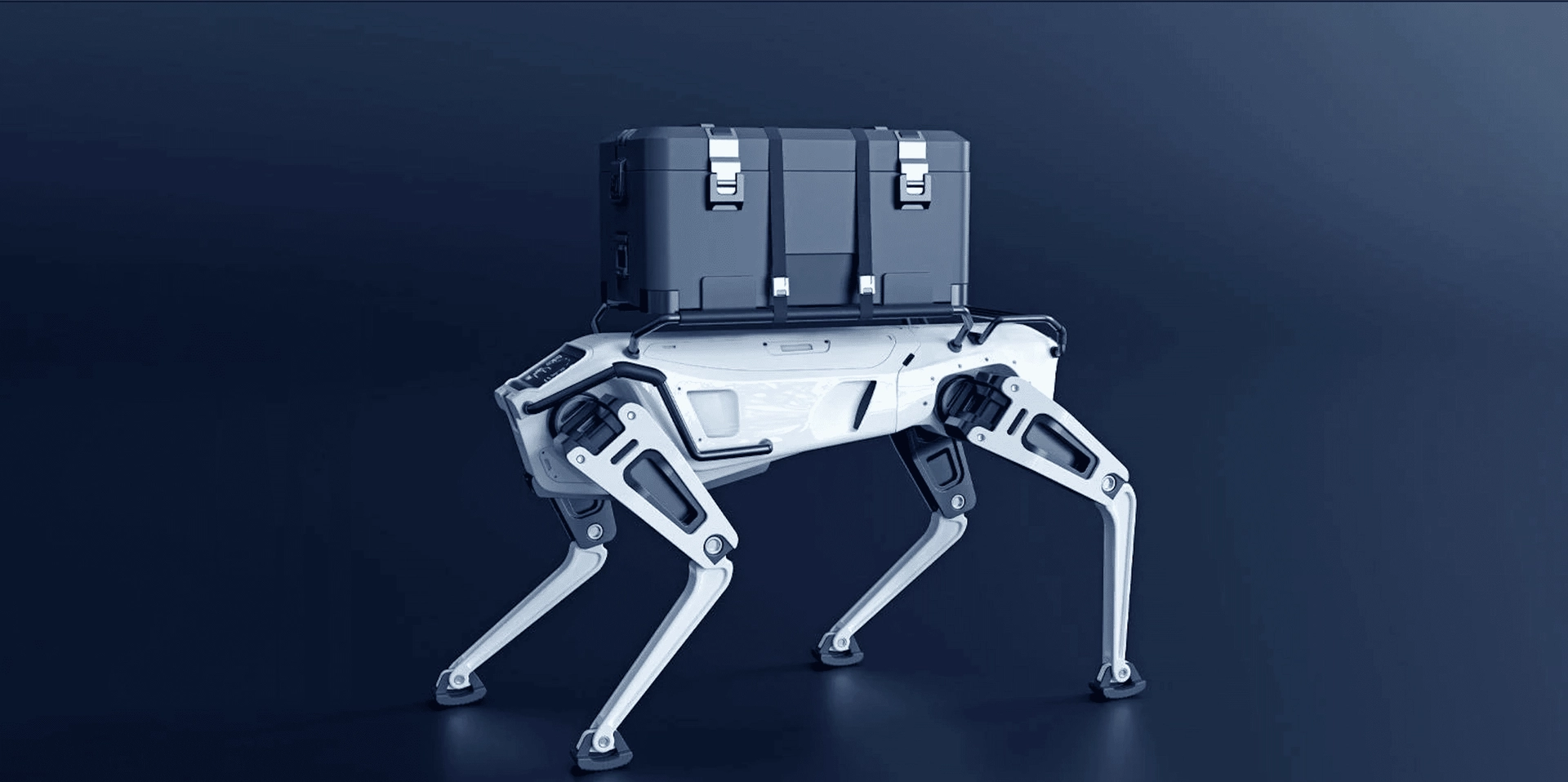The Difference Between Generative AI vs Traditional AI

Aleksandr Dolgaryev
CTO
AI has become one of the defining technologies of the 21st century. It is powering everything: from systems for fraud detection to personalized recommendations on Netflix. However, in the last 3 years, generative AI has taken the spotlight, offering not just simple analysis but creativity at scale.
According to McKinsey’s report, approximately 79% of the executives have already tested generative AI in their operational business processes. Meanwhile, Gartner assumes that over 80% of companies will use GenAI APIs by 2026. Such a rapid shift raises the question: how is generative AI different from the traditional AI that has dominated the market for the last 20 years?
Distinction matters here as each one has its strengths: traditional AI excels in predictive analysis and optimization, while generative AI creates original content. Companies put their investments or even reputation at risk if they don’t apply these technologies wisely. Thus, in this article, we are exploring the evolution of AI, comparing traditional AI vs generative AI use cases, discussing strengths and limitations, as well as risks of each.
The Evolution of Artificial Intelligence: From Rules to Generation
During the 1990s and early 2000s, the field of AI saw the rise of machine learning. This time, engineers trained algorithms using large datasets instead of following human-written rules. Such a breakthrough resulted in credit scoring tools, supply chain optimization, and spam filters, marking it as the era of traditional AI.
The 2010s brought innovations in deep learning and speech recognition, which paved the way for real-time translation and autonomous vehicles. Generative Adversarial Networks (GANs) introduced by Ian Goodfellow in 2014 pioneered the idea of having two models compete: a generator that produces data and a discriminator that evaluates it.
Such a discovery enabled the synthesis of highly realistic data. GANs became the foundation for such applications as image generation, style transfer, and super-resolution.
2017 was another breakthrough year, which introduced the Transformer architecture. Being a self-attention model, it allows models to process entire data sequences in parallel, making training faster. Today, Transformer technology is the backbone of LLMs and other multimodal systems.
By 2020, generative AI had emerged as the next leap, with diffusion models being in the spotlight of more advanced image and audio generation. It was exactly the time when many IT companies noticed a potential in this innovative technology. Quantum has been working with AI since 2015, which means we are the leaders of scaling AI.
As opposed to other companies, which have adjusted their brand voice and the vector of their business strategy in response to the growing interest in AI-based solutions, our expertise comes from over a decade of dedicated work and hands-on knowledge of all aspects of AI models.
Unlike previous predictive models that classify or predict, generative AI uses advanced architectures (transformers, GANs, diffusion models) to create. Systems like ChatGPT (OpenAI) and Gemini (Google DeepMind) represent this shift. This transition mirrors the broader shift in the paradigm of AI research: from answering “what is this?” to “what can I create?” (Stanford AI Index Report, 2023).
What is Traditional AI?
Traditional AI is an AI model that focuses on approaches based on analysis, classification, prediction, and optimization. It does not generate new outputs, working within the boundaries of the existing structured inputs.
Traditional AI Systems: Key methods
Tools and Examples
Non-generative AI has laid a solid foundation for multiple business processes that happen seamlessly and remain unnoticed by a regular customer. With over 100 commercial projects to its name, Quantum is at the forefront of successfully integrating traditional AI into various spheres. The company’s work on fraud detection with AI illustrates traditional AI’s strengths.
By analyzing transaction histories with anomaly detection algorithms, financial institutions were able to reduce the number of suspicious transactions without introducing customer friction.
Retail is another sphere where global leaders like Walmart and Amazon benefit from AI usage. Predictive AI helps them anticipate shopping trends to stock on time and minimize waste. Despite its obvious accuracy and prediction, this optimization is limited to the existing information as opposed to generating non-existent data in case of GenAI.
Healthcare is another field that benefited greatly from traditional AI. Healthcare is tightly connected to the analysis of multiple data, which is quite time-consuming and not always cost-efficient. Predictive models are among the best tools that can help detect chronic diseases earlier, as was demonstrated by our advanced blood cancer classification tool.
Other applications of traditional AI include:
- Energy: predictive maintenance for turbines and grids.
- Logistics: optimization of routes to cut fuel costs.
Such solutions based on traditional AI are not only reducing the burden on hospital resources but also improving diagnostic accuracy. Popular libraries such as TensorFlow, scikit-learn, and PyTorch support such multimodal tasks, making traditional AI cost-efficient and accessible. When the task is prediction-focused, structured, and accuracy-driven, traditional AI is usually the best fit.
What is Generative AI?
Definition and Core Principles
Generative AI focuses on generating new data, which resembles human creative solutions by recognizing specific deep structures within datasets and reorganizing them into original output. Apart from simply producing texts and images from scratch, generative AI has redefined industry processes. For example, GitHub Copilot enhances software development by suggesting code lines, saving engineers precious hours of work. Generative AI thrives in the environment of unstructured data, serving as a catalyst for innovation.
Key Technologies
- Large Language Models (LLMs): GPT-4, Gemini, Claude for text and code generation.
- Generative Adversarial Networks (GANs): producing images and videos.
- Diffusion Models: powering tools like DALL·E 3 and Stable Diffusion for realistic imagery.
How it Works
There are 3 main steps involved in how GenAI works:
- Training: models are trained using massive datasets.
- Representation: learning the latent representation of various patterns.
- Generation: the model generates content (text, images) based on the prompt.
Tools and Examples
Generative AI has a breakthrough potential in business. According to PwC, active implementation of GenAI can add approximately $15,7 trillion to the world’s economy. As a result, at Quantum, we see an increase in generative AI usage in business operations. Working in the field of data science and AI since 2015, we actively engage with multiple businesses and consult about potential advanced solutions for their niche. For example, in our blog, we recently wrote about hyper-personalized services that enable the generation of extra revenue and attract new clients.
E-commerce is another niche that maximizes the usage of generative AI for business scaling. AI-supported optimization of online shops is expected to generate a measurable positive impact, as we demonstrated in our solution for e-commerce retailing. Apart from significantly increased automation of routine tasks, engagement rates grew proportionally.
Having introduced a multilingual AI agent, we expanded market reach and ensured 24/7 support is available for all clients. Non-stop sales alongside solid customer support around the clock increased revenue and improved customer satisfaction rates.
Owing to deep learning techniques, at Quantum we were able to deliver GenAI solutions in various spheres, including healthcare and pharmacy, with ultimate benefit for each party:
- for patients – improved therapy compliance and efficacy;
- for physicians – a more accurate decision-making process;
- for healthcare providers – reduction of treatment cost through decreased number of hospitalizations as well as emergency treatments.
Meanwhile, the ability to generate new content helps to automate the creation of marketing copy and product descriptions, freeing human teams to focus on other higher-end tasks. Working beyond the rigid limitations of traditional AI, the creative side of GenAI makes it more and more embedded into operational processes.
Key Differences Between AI and GenAI
Key differences of generative AI vs traditional AI can be summarized according to several key categories: goal, types of data, outputs, cost, and complexity.
Analysis of Differences
- Goal: traditional AI improves efficiency and is good at specific scenarios; generative AI sparks innovation and is able to generate new content.
- Data: predictive AI depends on structured records; GenAI thrives on multimodal data.
- Outputs: one predicts; the other generates.
- Costs: open-source predictive models are relatively cheap and do not require a team of tech specialists to support them; training GPT-like systems costs more, as it requires an AI provider.
- Complexity: businesses may prefer traditional AI for credibility, while GenAI requires new governance frameworks.
Use Cases: AI in Action
Finance
Both Traditional AI and Generative AI have earned their spot in the finance sector, serving as a reliable assistant.
Traditional AI underpins trading algorithms and identifies anomalies in structured datasets while protecting sensitive data. Above that, machine learning has revolutionized the sphere by automating routine tasks.
Generative AI may create personalized financial reports and summaries, allowing banks as well as individual entrepreneurs to correct their business strategy and offer personalized financial solutions for businesses. Above that, LLMs have become a cornerstone of document processing in finance, serving as a time- and cost-saving tool.
Healthcare
The exploration of machine learning in healthcare demonstrated that traditional AI can significantly enhance efficacy, reduce costs, and time consumption by healthcare specialists. Predictive analysis performed by a traditional AI is especially beneficial for doctors or healthcare analysts who are involved in research. Meanwhile, GenAI helps those healthcare professionals who deal with end clients:
- consultants,
- receptionists,
- nurses.
Taking into account our expertise and experience in offering AI-based solutions in healthcare, we have proved through our multiple projects: predictive AI improves chronic disease diagnosis, improves prognosis, and risk stratification assessment.
Manufacturing
Manufacturing is another high-risk domain that has been experimenting with introducing AI technologies into its processes. From basically replacing human labor to automation of repetitive processes, AI technologies have earned their place in the industry. Safety is one of the paradigms that was redefined with the help of AI.
Computer vision systems with OCR became especially beneficial here, as they increase manufacturing efficiency. Our quality control solution demonstrated 99,9% accuracy in anomaly detection due to real-time video processing based on embedded AI.
Owing to solid analytical capabilities, AI-powered solutions can monitor equipment’s condition and predict its maintenance needs. This is a textbook example of traditional AI excelling at structured forecasting.
Customer Support
One of the best ways to assess the growing trend in GenAI usage is to see the number of GenAI-powered agents and chatbots. One of the projects our expert team at Quantum delivered was a generative AI chatbot that transformed customer service operations. Unlike traditional scripted bots, it offered empathetic interactions and cut response times while boosting customer satisfaction metrics.
Together, these few cases prove that regardless of the niche or sphere of usage, the real competitive edge lies in combining these two models – prediction and creation.
Strengths and Limitations: Traditional vs Generative AI
Both AI models have their strengths and limitations, which are used to determine the most appropriate tool for specific purposes.
Traditional AI
- Strengths: proven reliability, explainability, and relatively low cost. Works well in scenarios it was trained on.
- Limitations: requires structured datasets, less efficient for tasks requiring a creative approach.
Generative AI
- Strengths: availability of multimodal outputs, creativity, and adaptability in various areas.
- Limitations: ethical considerations, relatively high computational costs, and risk of hallucinations when the data becomes too specific.
Economic efficiency is another essential question lying in the long-term perspective of AI usage. Traditional AI often relies on open-source libraries, which are objectively cost-effective. On the contrary, generative AI requires a provider to pay for usage, which significantly increases costs.
As OpenAI CEO reported, training GPT-like AI models may require 1000,000,000$, which increases potential expenditures for businesses looking to implement GenAI-based solutions. Identifying the processes and industries that will benefit from either model’s solutions is one of the keys to both cost- and money-efficient decisions in business.
Risks and Ethical Considerations
Both AI frameworks raise serious challenges:
- Privacy: risk of sensitive datasets leaks during training.
- Bias: both models (predictive and generative) may strengthen societal biases.
- Copyright: generative AI can potentially reproduce copyrighted work, which raises serious legal disputes.
Working with AI for nearly a decade, we realize the complexity of ethical considerations of using both traditional AI and generative AI. Our groundwork and research on ethical AI frameworks emphasize the need for auditable pipelines, bias detection tools, and transparent reporting. For example, one approach is training on synthetic datasets generated under strict governance, reducing exposure to personal data while maintaining performance.
Privacy
The risk of sensitive data leakage has never been more critical than during AI training. Such exposure is not limited to a model’s certain development phase – deployment itself can also possess potential risks. The complex structure of modern generative AI systems, including the vast utilization of vast datasets, makes it difficult to trace the origin of the information. As a result, we have a conflict with current regulations (for example, GDPR).
Various AI tools have been actively introduced into many spheres, including finance and healthcare, where data vulnerability is at its highest. Not only the lack of a solid regulatory basis and procedures, which enable firm control over data transfer and its protection, but also the lack of technological tools to support all of the aforementioned, are in the spotlight of debates.
Several solutions, such as differentiated privacy and federated learning, are currently being investigated as potential countermeasures. They are expected to minimize data leakage, allowing new AI models to train on decentralized datasets.
Bias
Both traditional and generative AI may strengthen biases. One major reason underlying this is that they are trained on historical data that often reflects existing human prejudices and systemic discrimination. Consequently, it can lead to discrimination-based decisions in multiple areas, including:
- applications for loans,
- hiring processes,
- criminal justice.
In case of non-generative AI, this can result in inaccurate risk assessment for certain demographic groups or misalignment. The cause for this is believed to be rooted in inappropriate training: wrong answers and negative behaviors during training produce misalignment in various spheres. For GenAI, bias can be detected in stereotypical or even potentially harmful content generation. Addressing bias requires not just careful data selection but also re-training the model by means of correct algorithms and specific positive reinforcement of “correct” behavior.
Copyright
Generative AI can potentially reproduce copyrighted work, which raises serious legal concerns. It is especially frustrating for content creators, artists, and publishers, who insist that their intellectual property is being repurposed without permission or financial compensation. The concept of “fair use” is being actively discussed in courts worldwide as the legal system attempts to keep pace with technological capability to generate content from millions of source items. In addition to that, there are legal questions concerning the ownership of the output itself: who owns the rights to a piece of content generated by an AI – the developer of the model, the user who prompted it, or is it un-copyrightable?
The Future Lies in Traditional vs Generative AI Balance
The massive shift towards generative AI does not mean traditional AI is doomed. Instead, the difference between AI and Gen AI models complements one another. For example, we can use traditional AI to generate data for training in any sphere, whereas generative AI will suggest more specific scenarios to enhance expertise or verify specific outcomes. It is crucial to combine both to gain a strategic advantage in business.
Having over 10 years of experience in AI consulting and development, at Quantum we see the future not as a competition between the two but as a synergy-driven ecosystem. Traditional AI remains the number one solution for structured tasks such as fraud detection, prediction, and optimization. Generative AI opens doors to personalized customer experiences and scalable creativity.
Moreover, the balance is not simply in technical aspects but also in ethical and economic terms. While generative AI carries higher compute costs and complex legislative risks, traditional AI offers stability and transparency that businesses can trust. By suggesting hybrid solutions that combine predictive reliability with generative features, at Quantum, we empower clients to unlock multiple efficiencies, mitigate risks, save costs, and accelerate digital transformation.
Our experts at Quantum are ready to guide companies through this evolution. Whether it’s retail demand forecasting, AI-powered healthcare diagnostics, or customer service automation, the organizations that embrace this dual model will not just adapt – they will lead the next era of intelligent business models.
LLM-powered solution development
Discover how custom LLM agents can streamline decision-making, automate workflows, and unlock new AI-driven value across your organization.
Check the service














